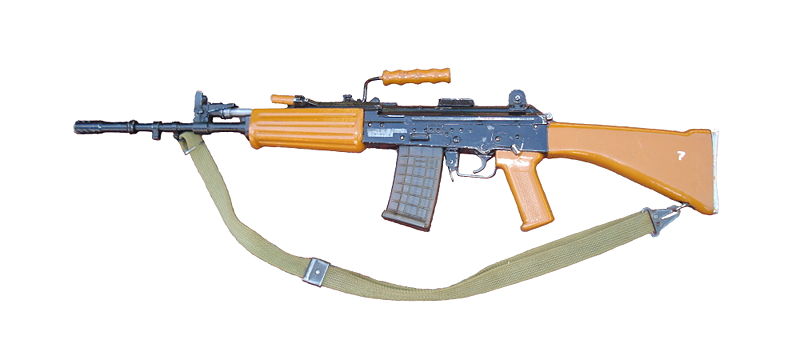India spent a lot of time and money to develop an arms industry that could supply the Indian army with Indian-made weapons. One of these weapons is the INSAS rifle. Unfortunately. Strategy Page reports on the resurrection of the INSAS despite its many failings in combat conditions:
In early 2015 India seemed to be finally responding to complaints from soldiers and other security personnel fed up with the poor performance of the locally made INSAS (Indian Small Arms System) 5.56mm assault rifle. The government recently reneged on that promise and announced that the despised INSAS would be replaced, in two years, by the MIR (Modified INSAS Rifle). On paper there are some improvements, like full auto-fire (INSAS can only do single shot or three round bursts), folding butt stock, Picatinny rail (for all manner of accessories), more reliable and effective magazines and more ergonomic design (making MIR easier to handle, clean and use). The government also revealed that recent firing tests have shown only two jams after 24,000 rounds fired by MIRs. There will also be a MIR 2 that is chambered to fire the AK-47 (7.62×39) round. Despite all that, to the current unhappy INSAS users the promise of the MIR comes as a huge disappointment. The government weapons design capability has a long and consistent history of failure and disappointing promises. Few INSAS users believe MIR will be much of an improvement over INSAS and will serve more as another source of cash for corrupt officials. While buying foreign weapons uses a lot of valuable foreign exchange it is more closely monitored and has proven to be less corrupt. In 2010 the government had agreed to allow the military to get a rifle that works and that meant a foreign rifle. The leading candidate was Israeli. But now that competition has been cancelled and many troops believe it is all about corruption, not getting the best weapons for the military.
This sad situation began in the 1980s when there was growing clamor for India to design and build its own weapons. This included something as basic as the standard infantry rifle. At that time soldiers and paramilitary-police units were equipped with a mixture of old British Lee-Enfield bolt action (but still quite effective) rifles and newer Belgian FALs (sort of a semi-automatic Lee-Enfield) plus a growing number of Russian AK-47s. The rugged, easy to use and reliable Russian assault rifle was most popular with its users.
In the late 1980s India began developing a family of 5.56mm infantry weapons (rifle, light machine-gun and carbine). Called the INSAS, the state owned factories were unable to produce the quantities required (and agreed to). Worse, the rifles proved fragile and unreliable. The design was poorly thought out and it was believed corruption played a part because the INSAS had more parts than it needed and cost over twice as much to produce as the AK-47.




